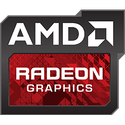
AMD's Radeon RX 9070 Launch Faces Pricing Hurdles
AMD's upcoming Radeon RX 9070 series graphics cards have hit an unexpected roadblock, according to recent reports from PC Games Hardware. Despite physical units already reaching select retailers, the launch appears to be delayed due to ongoing pricing negotiations. Industry insider and forum moderator "pokerclock," known for accurate predictions about NVIDIA's GeForce RTX 50 series, reveals that AMD's initial pricing strategy has created tension with retail partners. While boxes bearing the RX 9070 branding have been spotted in retail channels, disagreements over costs have prevented an official release. The core issue stems from AMD's aggressive pricing approach for both the RX 9070 and RX 9070 XT models. Retailers have pushed back against what they consider excessive wholesale costs, forcing AMD to reconsider its strategy.
The company now faces the complex task of potentially reducing prices while compensating retailers who have already purchased inventory at higher rates. Sources suggest AMD may offer marketing funds or cashback incentives to bridge the price gap, though negotiations have reportedly stalled. For example, we recently reported on the AMD Radeon RX 9070 XT AIB model costing around $549. However, NVIDIA has announced its GeForce RTX 5070 at the same $549 price point, with potentially equal or higher raster, ray tracing, and AI capabilities across the board. For AMD to make the value case, the company would need to undercut NVIDIA's pricing. Until that is resolved, retailers aren't allowed to place RDNA 4 GPUs in general sale yet.
The company now faces the complex task of potentially reducing prices while compensating retailers who have already purchased inventory at higher rates. Sources suggest AMD may offer marketing funds or cashback incentives to bridge the price gap, though negotiations have reportedly stalled. For example, we recently reported on the AMD Radeon RX 9070 XT AIB model costing around $549. However, NVIDIA has announced its GeForce RTX 5070 at the same $549 price point, with potentially equal or higher raster, ray tracing, and AI capabilities across the board. For AMD to make the value case, the company would need to undercut NVIDIA's pricing. Until that is resolved, retailers aren't allowed to place RDNA 4 GPUs in general sale yet.


























































